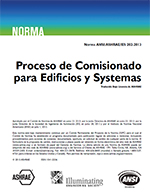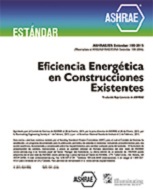Description
Click here to purchase
In an effort to reduce energy usage and associated emissions of buildings, British Columbia has recently introduced the BC Energy Step Code which has been adopted in some form by the majority of municipalities in the province. The BC Energy Step Code uses an incremental approach to making all new construction in BC net-zero ready by 2032, and requires detailed energy modelling following the National Energy Code of Canada for Buildings (NECB 2011) Part 8 standard, with some supplementary instructions provided by the City of Vancouver Energy Modelling Guidelines (CoV EMG). For passively cooled buildings, CoV EMG references ASHRAE 55-2010 Section 5.3 as the method by which overheating risk should be assessed – which refers to the adaptive model of thermal comfort. During the recent heat dome event in British Columbia, occupants in buildings which had previously met the criteria for overheating risk experienced significant overheating in suites which were not identified as critical. It is clear that future similar heat wave events and general increasing temperatures will likely cause overheating in BC buildings. In this study, alternative criteria for overheating risk is assessed and compared to the current code compliance method. Using a building located in Victoria, BC modelled according to Step Code requirements, the results of the energy simulation are used to determine overheating risk according to different thermal comfort analysis methods. The first is the method required for code compliance in BC: the ASHRAE adaptive method using interior dry-bulb temperatures (as required by CoV EMG). The second is the ASHRAE adaptive method, but using interior operative temperatures as originally intended by ASHRAE 55. The third thermal comfort approach is the ASHRAE 55-2017 Analytical Comfort Zone Method, undertaken for a variety of input parameters. The final two methods used assessed overheating risk according to the Passive House standard, which gives a constant temperature limit for the entire year – this limit will be assessed using both dry-bulb and by operative temperatures. The results of the five thermal comfort studies are presented and compared, for both current weather data and for future climate modelling scenarios.
Product Details
- Published:
- 2022
- Number of Pages:
- 9
- Units of Measure:
- Dual
- File Size:
- 1 file , 3.9 MB
- Product Code(s):
- D-TO-22-C060
- Note:
- This product is unavailable in Russia, Belarus




